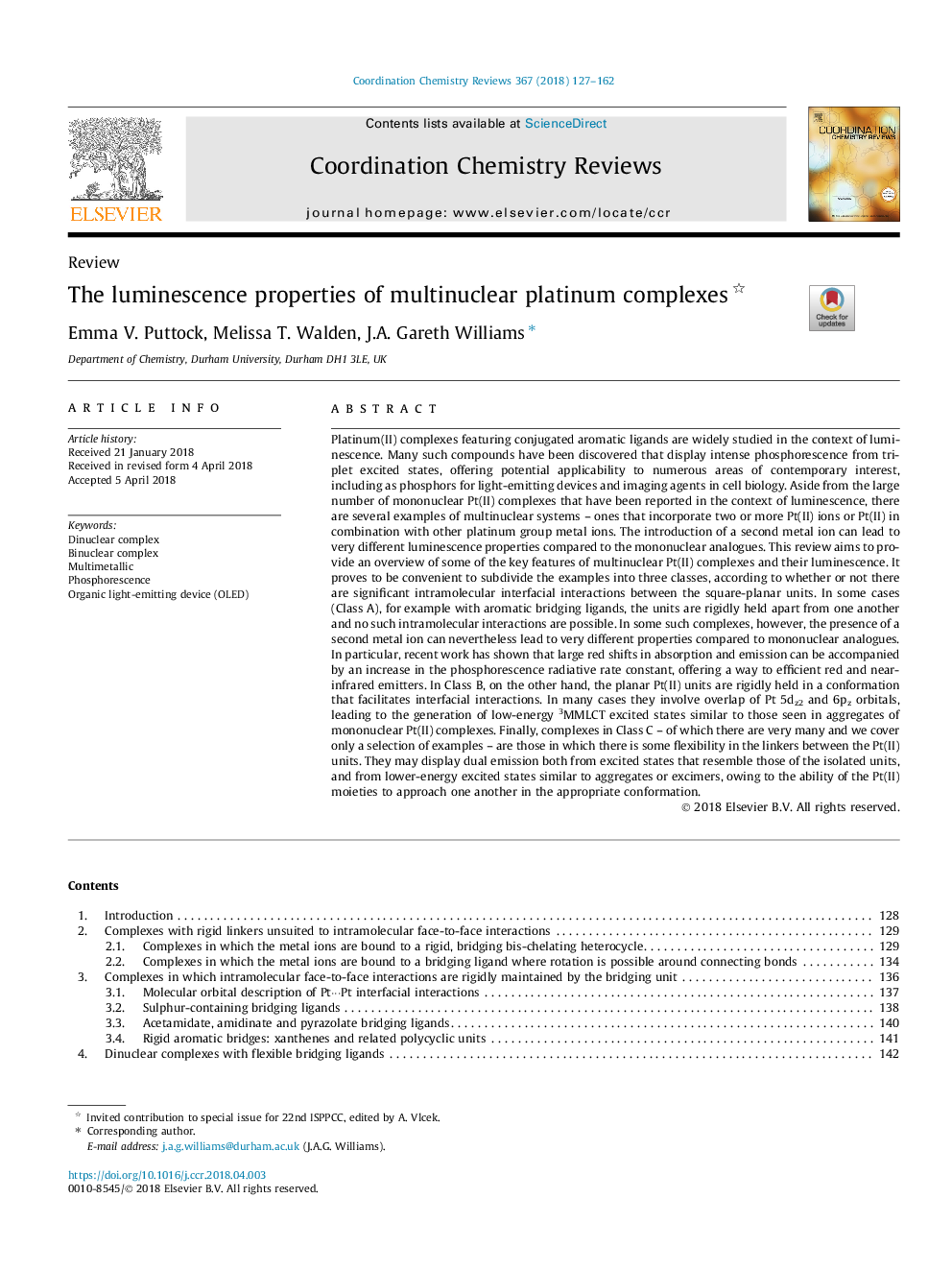| کد مقاله | کد نشریه | سال انتشار | مقاله انگلیسی | نسخه تمام متن |
|---|---|---|---|---|
| 7747502 | 1498661 | 2018 | 36 صفحه PDF | دانلود رایگان |
عنوان انگلیسی مقاله ISI
The luminescence properties of multinuclear platinum complexes
ترجمه فارسی عنوان
خواص لومینسانس مجتمع های پلاتین چند هسته ای
دانلود مقاله + سفارش ترجمه
دانلود مقاله ISI انگلیسی
رایگان برای ایرانیان
کلمات کلیدی
موضوعات مرتبط
مهندسی و علوم پایه
شیمی
شیمی معدنی
چکیده انگلیسی
Platinum(II) complexes featuring conjugated aromatic ligands are widely studied in the context of luminescence. Many such compounds have been discovered that display intense phosphorescence from triplet excited states, offering potential applicability to numerous areas of contemporary interest, including as phosphors for light-emitting devices and imaging agents in cell biology. Aside from the large number of mononuclear Pt(II) complexes that have been reported in the context of luminescence, there are several examples of multinuclear systems - ones that incorporate two or more Pt(II) ions or Pt(II) in combination with other platinum group metal ions. The introduction of a second metal ion can lead to very different luminescence properties compared to the mononuclear analogues. This review aims to provide an overview of some of the key features of multinuclear Pt(II) complexes and their luminescence. It proves to be convenient to subdivide the examples into three classes, according to whether or not there are significant intramolecular interfacial interactions between the square-planar units. In some cases (Class A), for example with aromatic bridging ligands, the units are rigidly held apart from one another and no such intramolecular interactions are possible. In some such complexes, however, the presence of a second metal ion can nevertheless lead to very different properties compared to mononuclear analogues. In particular, recent work has shown that large red shifts in absorption and emission can be accompanied by an increase in the phosphorescence radiative rate constant, offering a way to efficient red and near-infrared emitters. In Class B, on the other hand, the planar Pt(II) units are rigidly held in a conformation that facilitates interfacial interactions. In many cases they involve overlap of Pt 5dz2 and 6pz orbitals, leading to the generation of low-energy 3MMLCT excited states similar to those seen in aggregates of mononuclear Pt(II) complexes. Finally, complexes in Class C - of which there are very many and we cover only a selection of examples - are those in which there is some flexibility in the linkers between the Pt(II) units. They may display dual emission both from excited states that resemble those of the isolated units, and from lower-energy excited states similar to aggregates or excimers, owing to the ability of the Pt(II) moieties to approach one another in the appropriate conformation.
ناشر
Database: Elsevier - ScienceDirect (ساینس دایرکت)
Journal: Coordination Chemistry Reviews - Volume 367, 15 July 2018, Pages 127-162
Journal: Coordination Chemistry Reviews - Volume 367, 15 July 2018, Pages 127-162
نویسندگان
Emma V. Puttock, Melissa T. Walden, J.A. Gareth Williams,
